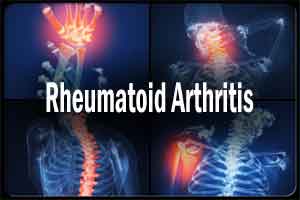- Home
- Editorial
- News
- Practice Guidelines
- Anesthesiology Guidelines
- Cancer Guidelines
- Cardiac Sciences Guidelines
- Critical Care Guidelines
- Dentistry Guidelines
- Dermatology Guidelines
- Diabetes and Endo Guidelines
- Diagnostics Guidelines
- ENT Guidelines
- Featured Practice Guidelines
- Gastroenterology Guidelines
- Geriatrics Guidelines
- Medicine Guidelines
- Nephrology Guidelines
- Neurosciences Guidelines
- Obs and Gynae Guidelines
- Ophthalmology Guidelines
- Orthopaedics Guidelines
- Paediatrics Guidelines
- Psychiatry Guidelines
- Pulmonology Guidelines
- Radiology Guidelines
- Surgery Guidelines
- Urology Guidelines
New PET imaging method for assessment of rheumatoid arthritis

A recent study in The Journal of Nuclear Medicine demonstrates a new positron emission tomography (PET) imaging method that evaluates the extent of rheumatoid arthritis (RA) more fully by targeting translocator protein (TSPO) expression in the synovium (joint lining tissue).
Nehal Narayan, University of Oxford, Oxford, U.K, and colleagues conducted the study to investigate TSPO expression in major cellular constituents of RA pannus—monocytes, macrophages, fibroblast-like synoviocytes (FLS cells), and CD4-positive (CD4+) T lymphocytes (T cells)—to more accurately interpret TSPO PET signal from RA synovium.
PET radioligands that target TSPO, which is highly expressed on activated macrophages (immune cells responding to inflammation), have proved an excellent tool for imaging joint inflammation in rheumatoid arthritis (RA).
"TSPO-targeted imaging has long been used as a means of imaging macrophage infiltration in vivo," explains, Ms. Narayan. "Numerous studies have demonstrated TSPO-targeted PET as a highly sensitive and specific means of imaging synovitis [inflammation of joint lining tissue], purportedly through imaging synovial macrophage infiltration, a critical process in RA pathogenesis. However, this premise does not take into account the ubiquitous expression of TSPO."
She points out, "Here we present the first-ever analysis of TSPO expression in the major constituents of RA pannus (inflamed synovium), demonstrating that TSPO PET likely acts as an imaging tool of not only macrophages but also activated synovial fibroblasts, a cell group increasingly recognised to play a critical role in RA inflammation."
Read Also: New PET tracer helps in early diagnosis & Rx of RA
The study included three RA patients and three healthy volunteers who underwent PET scans of both knees using the TSPO radioligand carbon-11 (11C)-PBR28. In addition, the cellular expression of TSPO was examined in synovial tissue from these individuals, plus three more RA patients and three more healthy patients (undergoing knee arthroscopy for injuries). TSPO mRNA expression and hydrogen-3 (3H)-PBR28 radioligand binding was assessed using in vitro monocytes, macrophages, fibroblast-like synoviocytes (FLS) and CD4+ T-lymphocytes.
Key Findings:
- 11C-PBR28 PET signal was significantly higher in RA joints compared to healthy joints.
- 3H-PBR28 specific binding in synovial tissue was approximately 10-fold higher in RA patients compared to healthy controls.
- Immunofluorescence revealed TSPO expression on macrophages, FLS, and CD4+ T cells.
- In vitro study demonstrated highest TSPO mRNA expression and 3H-PBR28 specific binding in activated FLS, non-activated and activated 'M2' reparative macrophages.
- The lowest TSPO expression was in activated and non-activated CD4+ T lymphocytes.
Narayan notes, "It is well recognized that not all currently available treatments are capable of controlling joint inflammation in all patients with rheumatoid arthritis, hence the need to develop new pharmacological therapies. This work demonstrates that TSPO PET is able to act as a means of imaging not only synovial macrophages but also activated synovial fibroblasts. The crucial role of the fibroblast and its soluble products in RA pathogenesis is increasingly realized."
She adds, "Indeed, there has been a recent interest in targeting activated fibroblasts as a novel targeted treatment strategy for RA. Therefore, TSPO PET imaging in early phase clinical trials may provide a sensitive indication of treatment response to such novel therapies with a view to informing the design of later stage clinical trials. As our knowledge of cellular TSPO expression and behavior grows, TSPO-targeted imaging may also give us unique insights into the pathogenesis of inflammatory disease."
Based on the study, the authors concluded that to our knowledge, this study was the first evaluation of cellular TSPO expression in synovium, with the highest TSPO expression and PBR28 binding being found on activated synovial FLS cells and M2 macrophages. TSPO-targeted PET may, therefore, have a unique sensitivity in detecting FLS cells and macrophage-predominant inflammation in RA, with potential utility for assessing treatment response in trials using novel FLS-cell–targeted therapies.
For more information log on to http://dx.doi.org/10.2967/jnumed.117.202200

Disclaimer: This site is primarily intended for healthcare professionals. Any content/information on this website does not replace the advice of medical and/or health professionals and should not be construed as medical/diagnostic advice/endorsement or prescription. Use of this site is subject to our terms of use, privacy policy, advertisement policy. © 2020 Minerva Medical Treatment Pvt Ltd